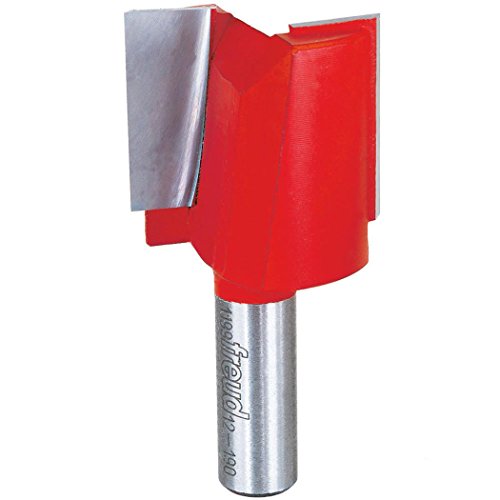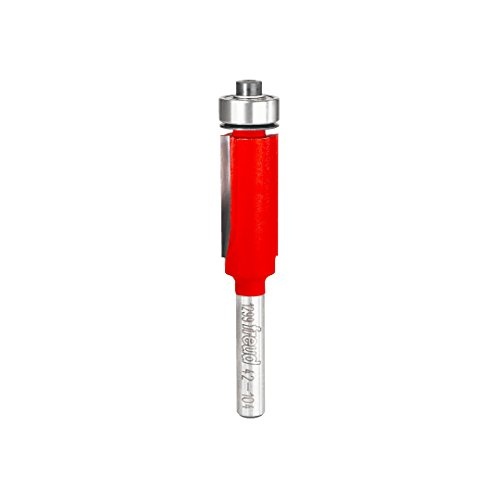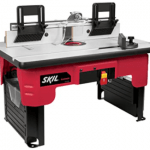Last Updated on March 21, 2021 by James
Ask a carpenter and he’ll tell you the importance and versatility of router. Gone are the days when wood router would only fancy the edges. With advancing techniques, this tool can execute some amazing cuts which you can’t even imagine. Be it dadoes, rabbets or cutting those perfect precise patterns, wood router can do it flawlessly.
Make sure that you run the router in a counterclockwise direction around the top of the workpiece. That way, it allows for an easy control as the bit pushes the the router towards you. This counterclockwise wood routing technique is the reason behind clean edges.
There are varied styles and sizes of router bits available to assist you in flawless cutting. But as they say, more the choices more the confusion, especially for beginners. To ease it out for you, we have compiled a list of a few wood router bits that a beginner should have and how they can be used. Take a look:
How Wood Router Bits Can Be Used
1. Rabbet Cutting
This joinery cut looks basic and is every new woodworker’s favourite. Rabbets are a rectangular recess along the edge of the workpiece. It basically gives a cleaner look to the plywood edges. To get the perfect width, you need to use special rabbet bits.
These rabbet bits have a pilot bearing at the tip that will cut the groove of the same thickness. They cut the shoulders in the edge of the workpiece that is then used to connect wooden pieces. To alter the width, you can either change the pilot bearing or the angle of the attack. However, to connect identical parts and joints use the same-size bearing.
2. Straight Bits
As the name suggests they are used to perform straight cuts. Straight bits have been popular from years. These are the most useful types of bits and come in an array of sizes, lengths, diameters and patterns.
These straight bits have plunge ability and has guide bearings on tip, which means better template routing. However, Spiral Bits can plunge deeper and offer a cleaner cut. For template routing, straight bits works best because you can buy them with guide bearings.
Unlike others, this is a non-piloted bit. So make sure you use the router along straight edges to effectively cut rabbets, dadoes, and grooves. They can be used to create plywood cabinet backs, shafts and drawer bottoms.

3. Flush Trim Bits
Flush trimming bits works incredibly well for template cuts. They can easily shape multiple identical parts. Once you are done cutting the pattern, these bits smoothen out the edges. Basically, it takes care of the imperfections. They come with bearing ‘over’ and “under”. Both work amazingly well, however they only differ in their position of functioning. Whether the template is above or below the workpiece, influences the choice.
However, a recent innovation has hit flush trim bits. It has bearings on either end of the bit and similar bearing between the cutting surface and shank. Irrespective of the fact that the template is placed above or below the workpiece, you can use the same bit.

4. Roman Ogee Bit
Of edge shaping bit types, this one is the most popular. They work effectively well for cuts that need precision.
Like decorative detailed cuts on the edges of tabletops. To control the width of the cut, a ball-bearing pilot is attached to the end.
5. Round-Over Bits
This edge-shaping bit are perfect for intricate detailing and giving rounded edges to tabletops, shelves, etc. Rounded edges make hard edges look soft. To control the cutting depth, just adjust the router base accordingly.
Their radius determines the size, i.e. it is classified according to the radius it cuts. Main bit sizes are 1/4- and 3/8-inch. To control the width of the cut, a ball-bearing pilot attached to the end. So, they are great for decorative edges.
6. Chamfer Bits
Again, this one is edge shaping bit. They are used to cut the bevel of a particular angle and remove sharp edges. It is created at a 45° angle, called a chamfer, to two adjoining right-angled faces.
It also helps in welding of workpieces together at a specific angle. It can also create V-shaped grooves between boards.
7. Slot Cutting Bit
This one is perfect for creating small grooves and slots on the edges of picture frames, shelves or cabinet door frames. To adjust the slot depth, they come with different-sized bearings.
The slot cutters have three or four cutting edges or “wings.” The slot cutters comes in varied thicknesses ranging from 1/16- to 1/4-inches. The width of the slot is determined by the thickness of the cutting teeth. A slot-cutting bit can even turn your router table into a joiner.
8. Raised Panel Bits
Raised-panel router bits have been becoming increasingly popular due to its ease. Be it your kitchen cabinet or on any furniture you can find a raised panel almost everywhere in the house. It is so easy to use that you can make frames and panel doors yourself.
Horizontal raised panel router bits are the most preferred ones. The vertical raised panel router bits need work-holding attachments to function. They go hand in hand with stile and rail bits.
Conclusion
Now, once you have understood the basics make sure to keep your router and bits clean to prevent corrosion and any functioning problems. Lubricate the bearings timely. Once you have procured the basic router bits and learned how to make use of them, go ahead with procuring the advanced ones to expand your woodworking collection.
